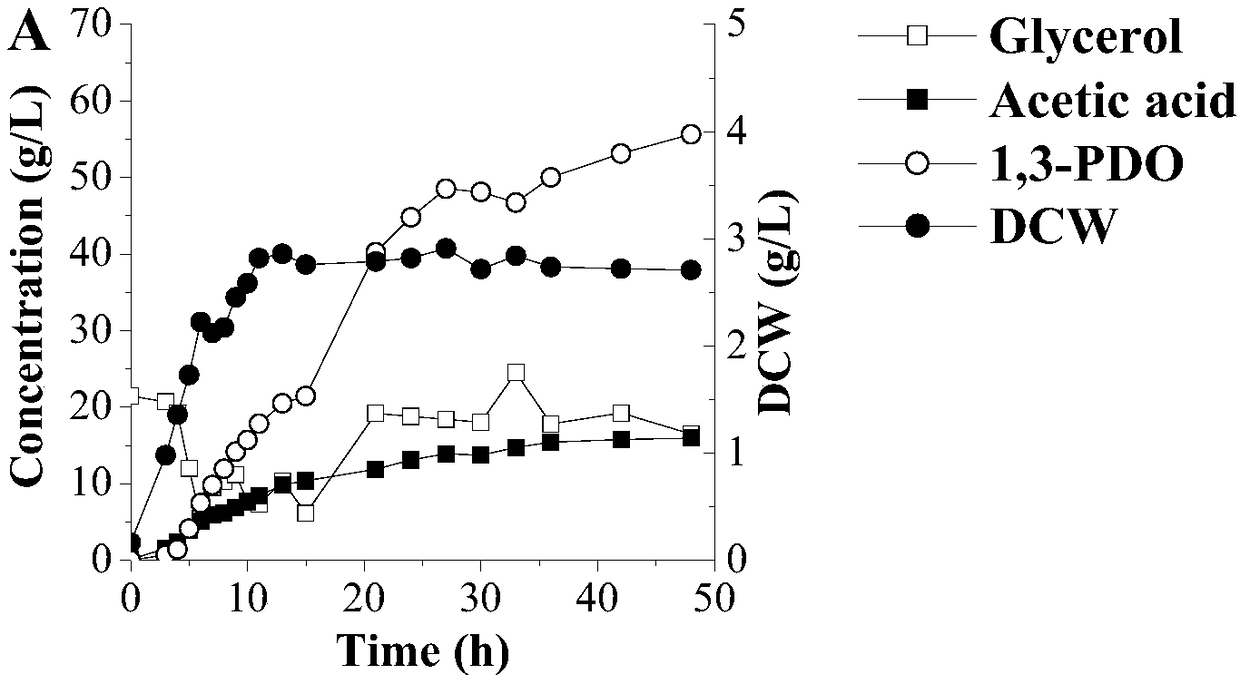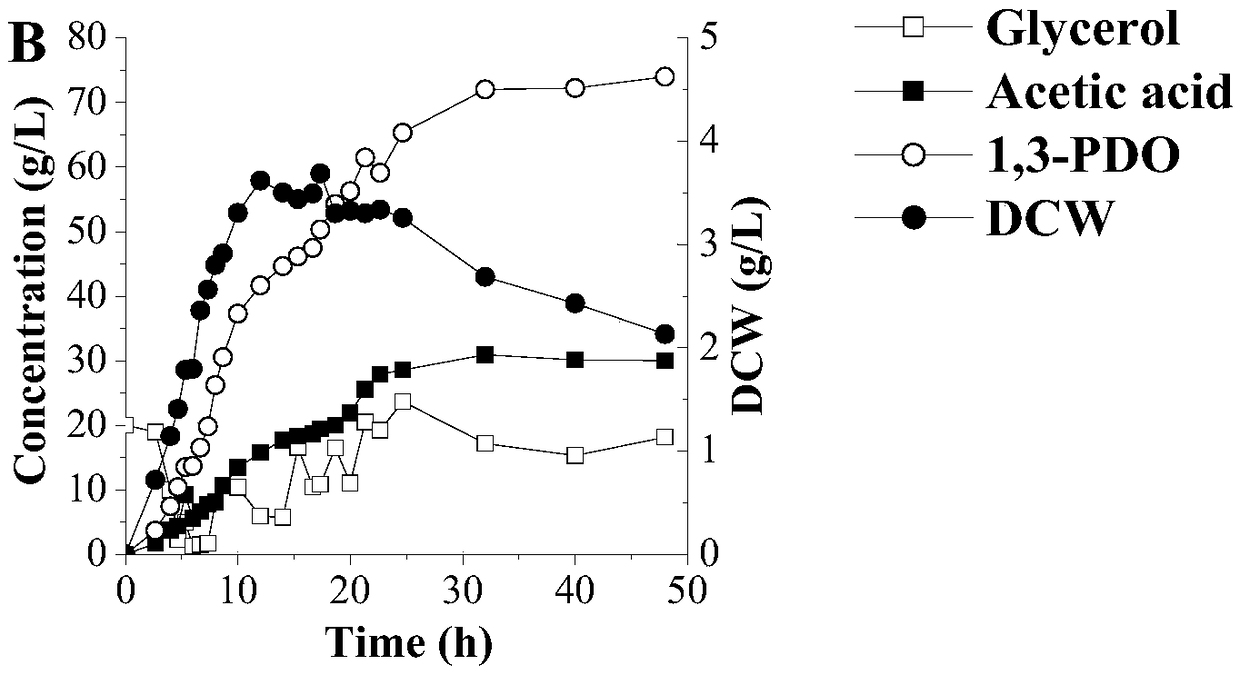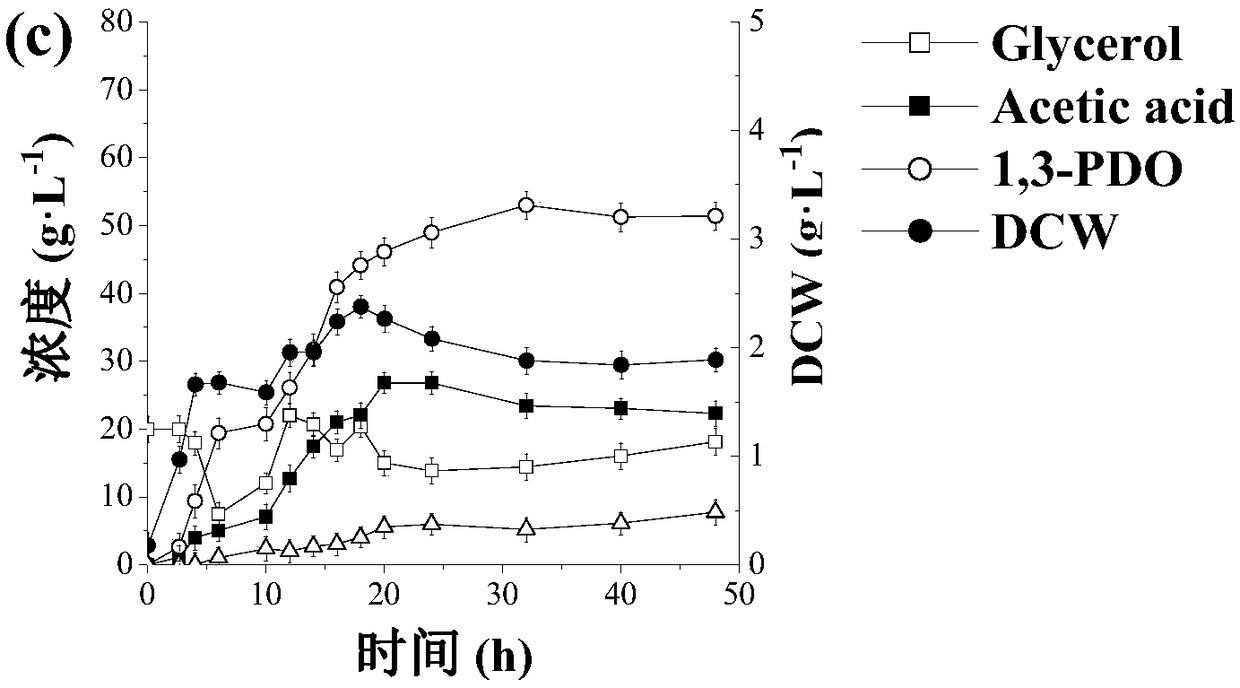Application of recombinant klebsiella pneumoniae in producing 1,3-propylene glycol
A Klebsiella, linking product technology, applied in the field of genetic engineering, can solve the problems of inability to improve substrate tolerance and decrease in biomass
- Summary
- Abstract
- Description
- Claims
- Application Information
AI Technical Summary
Problems solved by technology
Method used
Image
Examples
Embodiment 1
[0029] The preparation of embodiment 1 recombinant Klebsiella
[0030] The mexF gene sequence was obtained according to the genome sequence of Pseudomonas aeruginosa, and the fragment was amplified. The primers used are: mexF-F (sequence information is shown in SEQ ID No. 4) and mexF-R (sequence information is shown in SEQ ID No. 5).
[0031] The reaction system is as follows (50 μL): 25 μL Prime STAR Max Premix (2×), 15 pmol each of upstream and downstream primers, 150 ng template, add double distilled water to 50 μL (primers were synthesized by Shanghai Sangon Bioengineering Co., Ltd., and the rest were purchased from TaKaRa Company) , the amplification reaction conditions are as follows: 98°C, 10s; 55°C, 15s, 72°C, 1kb / min, 30 cycles.
[0032] The obtained PCR amplification products were verified by electrophoresis, and after the verification was successful, UNIQ-10 Column DNA Gel Recovery Kit (Shanghai Sangon Bioengineering Co., Ltd.) was used for rubber tapping recovery....
Embodiment 2
[0038] Example 2 Fermentation of recombinant Klebsiella expressing the mexF gene derived from Pseudomonas aeruginosa
[0039] The bacterial solution was inoculated into a 5L fermenter with 4% inoculum amount, anaerobic, fed-batch fermentation, and glycerol was fed to keep it at 15-30g / L, 37°C, 150rpm, and fermented for 48h. Sampling from time to time to measure OD by spectrophotometer 600 And measure the fermentation product by HPLC. like figure 2 As shown, the gene recombinant bacteria overexpressing Pseudomonas aeruginosa mexF were fed-batch fermented in a 5L fermenter, and the production of 1,3-propanediol was as high as 74g / L. Compared to wild type (see figure 1 ), the production of 1,3-propanediol increased by about 37%, and the highest biomass increased by 22.7%.
[0040] It is confirmed by Example 2 that overexpressing the Pseudomonas aeruginosa gene mexF in the recombinant Klebsiella can enhance the ability of Klebsiella to produce 1,3-propanediol.
PUM
 Login to View More
Login to View More Abstract
Description
Claims
Application Information
 Login to View More
Login to View More - R&D
- Intellectual Property
- Life Sciences
- Materials
- Tech Scout
- Unparalleled Data Quality
- Higher Quality Content
- 60% Fewer Hallucinations
Browse by: Latest US Patents, China's latest patents, Technical Efficacy Thesaurus, Application Domain, Technology Topic, Popular Technical Reports.
© 2025 PatSnap. All rights reserved.Legal|Privacy policy|Modern Slavery Act Transparency Statement|Sitemap|About US| Contact US: help@patsnap.com



